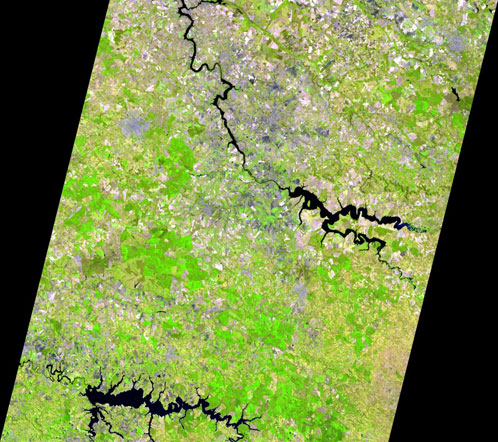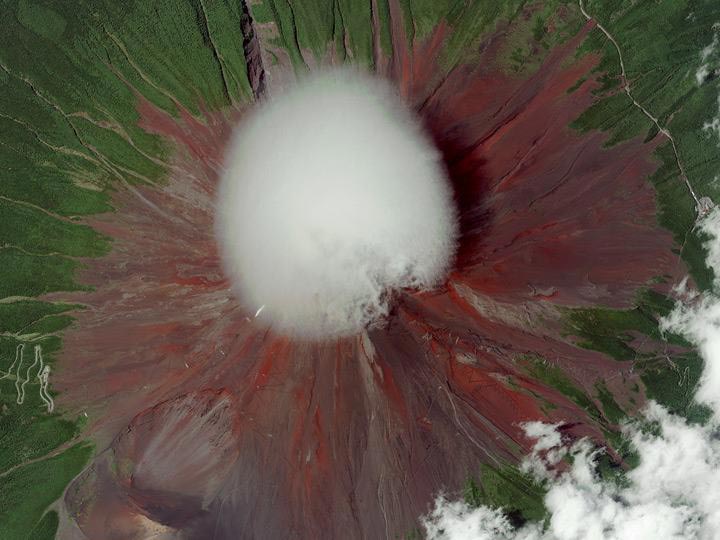
Free Data from Indian Resourcesat-2 Satellite via INPE
In December 2014, The National Institute for Space Research of Brazil (Instituto Nacional de Pesquisas Espaciais, INPE) announced the distribution of images deriving from the Indian Resourcesat-2 satellite. The images are received and collected at the ground station in Cuiabá, capital of the federal state of Mato Grosso, which is run by INPE. The images can be ordered for free at http://www.dgi.inpe.br/CDSR/ , only registration is required.
Resourcesat-2 is an orbiting Indian Earth Observation satellite and was launched in 2011 as a follow-on mission to the Indian Resourcesat-1 satellite increasing the observation timeliness (repetivity) in tandem with ResourceSat-1. It carries three imaging sensors LISS-3 (Linear Imaging Self Scanning Sensor), LISS-4 and AWiFS (Advanced Wide Field Sensor). While the resolution diminishes from 5,8m (LISS-4) and 23,5m (LISS-3) to 56m (AWiFS), the swath enhances from 70km and 141km to 740km respectively. All sensors record in the green, red and near infrared bands, whereas the latter two sensors also record in the short wave infrared spectrum. The ResourceSat data find their application in several areas like agricultural crop discrimination and monitoring, crop acreage/yield estimation, precision farming, water resources, forest mapping, rural infrastructure development, disaster management etc.
INPE also distributes satellite images from the CBERS missions (China and Brazil), LANDSAT missions and Resourcesat-1. Hence, the Brazilian Institute for Space Research constitutes one of the most complete remote sensing catalogues in the world with images starting in 1973 right after the launch of LANDSAT-1.

LISS-4 image (Mx mode, 6 m) of the Sharjah International Airport of the United Arab Emirats on May 8, 2011. Source: eoPortal

LISS-3 image (23,5m) from the interior of São Paulo State on September 22, 2014. Source: INPE

AWiFS image (56m) from the Corumbá region in the federal state of Mato Grosso do on September 30, 2014. Source: INPE
Did you like this post? Read more and subscribe to our monthly newsletter!








